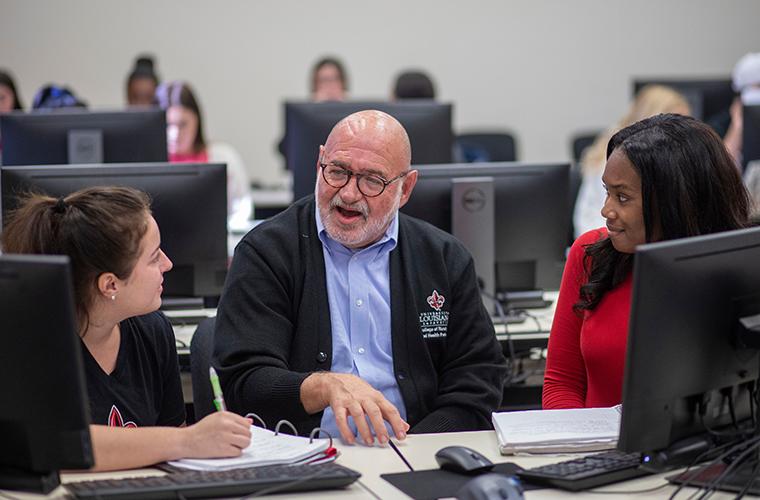Supporting Accessible Classrooms

At the Graduate School’s Fall 2025 Graduate Assistant and Fellowship Orientation, Dr. Carol Landry’s “Supporting Accessible Classrooms” session offered a timely and practical conversation on what accessibility means in higher education and how instructors can foster environments where every student feels welcomed, supported, and empowered.
Dr. Landry, UL Lafayette’s Director of Disability Services, opened her presentation discussing Americans with Disabilities Act (ADA), which requires that all university programs, services, and facilities comply with certain accessibility needs. For students, this process often begins with registering with the Office of Disability Services (ODS), submitting documentation, and receiving an accommodation letter to share with faculty.
As Dr. Landry discussed, accommodations are not optional. They are legal rights so that students with disabilities can participate fully in education. Faculty cannot refuse accommodations or question whether a disability exists; instead, their role is to ensure that supports are implemented fairly, confidentially, and without compromising the essential learning outcomes of a course.
The session also underscored that accessibility extends beyond individual accommodations. Universal Design for Learning (UDL) provides a broader framework for creating flexible learning environments that benefit all students.
Introduced in the 1990s, UDL encourages multiple ways of engaging with content, representing information, and demonstrating knowledge. The presentation illustrated this with practical examples like offering lecture materials in advance, recording sessions for later review, providing captions on videos, assigning class notetakers, relocating classes when necessary, and allowing occasional flexibility in deadlines. Such practices not only support students with documented disabilities but also anyone facing unexpected challenges.
Technology was highlighted as another bridge to accessibility. Tools such as screen readers, captioning services, Braille texts in digital formats, and software like JAWS expand access to materials. Even small adjustments, like ensuring PDFs can be read by assistive technology, can make a significant difference.
Most importantly, accessibility is about cultivating a culture of inclusion. When classrooms are designed with flexibility and empathy, students feel not only accommodated but also respected. As Dr. Landry said, equity is achieved when every student has a genuine opportunity to demonstrate their talents and knowledge, not just those who fit traditional models of learning and assessment.
For graduate students preparing to teach or assist in classrooms, the message was clear: accessible classrooms are stronger classrooms. By embracing UDL strategies, leveraging technology, and collaborating with ODS, it becomes easy to ensure that higher education is a place where every student can thrive.